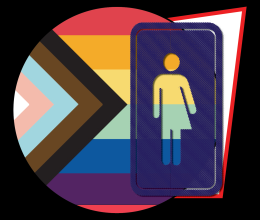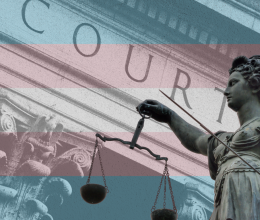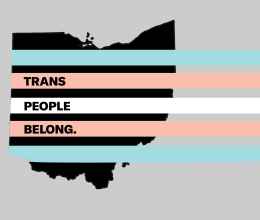In 2009, the Transgender Day of Visibility was created by transgender activist Rachel Crandall-Crocker, who saw a gap in the celebration of transgender individuals among the holidays celebrating LGBTQ+ people. The only day representing transgender individuals back then was the Transgender Day of Remembrance, which is celebrated on November 20. This day is usually reserved for mourning transgender murder victims. Seeing this gap, she set out to create a holiday that was a celebration of our life, rather than a mourning of our death. This year’s celebration is particularly special as it comes just two days after we filed a lawsuit to challenge Ohio’s discriminatory birth certificate policy. All Ohioans should have the correct gender marker on their birth certificates, and this form of visibility affects many aspects of a transgender person’s life.
For those who may not know what being transgender is, let me define it for you. A person is transgender, or trans for short, if they do not identify with the gender they were assigned at birth. Trans being the Latin root that means “across from.” The opposite of that is a person who identifies with the gender they were assigned at birth. This would be cisgender with the root of cis meaning “on the same side as.” Both of these words have roots in language and are used to describe different types of people. We will celebrate this year’s Transgender Day of Visibility on March 31, with a small look at what being visible in Ohio is like.
According to a survey by the Williams Institute, in 2016, there were an estimated 39,950 transgender adults in Ohio. Of those who are transgender, many are forced to stay closeted or only choose to come out to a few people because of the harm that can come from those who are not accepting of them. One Ohioan said, “Being a closeted trans person of color is a challenge all on its own. As a trans person in Ohio, my trans ness is open to people close to me that are open and accepting, and closed to people who are not.” (Anonymous; they/them pronouns)
Ohio is not the safest place for a transgender person to be out. Aside from the violence that is often perpetuated towards transgender individuals through micro or macro-aggressions and physical violence, Ohio law also hurts people who are transgender. You can lose housing, be fired from your job, and denied access to public services because of who you are or who you love. Many Ohioans are fighting to change this and garnering support for H.B. 160, the Ohio Fairness Act. HB 160 would strengthen Ohio’s existing non-discrimination laws by adding sexual orientation, gender identity, and gender expression to protect LGBT people and those who may be perceived as LGBT. If passed, this measure, and the ability to correct your gender marker on your birth certificate, would protect LGBT people statewide, bringing them a step closer to full access to their legal rights.
As a transgender Ohioan myself, I have been forced to hide my visibility when it is unsafe. And I feel the safest when I am able to fully be myself. I’m not the only Ohioan who is eagerly awaiting Ohio to adopt laws and policies that will make my life, and many others, a lot safer. "When you come out to people about your gender identity and they make an effort to learn and treat you with respect, it's one of the best feelings in the world. There is no more stress over what they say or how they'll react." (Meme A. they/them pronouns)
So what can we do, as fellow Ohioans, to bring about change that will enable more transgender individuals to be free to be who they are in this state? Well, here are four ways to start:
- Listen to the community
Disadvantaged people are often spoken over and unheard. Instead, listen to those who speak up about discrimination at work and in life. The only way to have truly positive change is through listening to the marginalized group, in this instance the Transgender community. - Create a culture of acceptance
Many people call for tolerance instead of calling for acceptance. When a place has a culture of tolerance, then people have to walk on egg shells. However, when there is real acceptance people are able to be who they truly are. For instance, in Ohio, transgender individuals are merely tolerated. Because of the lack of overall acceptance, we still face discrimination in daily life. By helping to bring about a culture of acceptance, you are actively standing with transgender individuals. - Contact your legislators and other state officials urging them to support statewide non-discrimination policies
Get advice on how to write your legislators here: Write your elected representatives. (Find your legislator) - Educate yourself and those around you
The more you know about others, and engage with people who are different than you, the more your world will expand. Read books and articles about transgender individuals, learn the history and engage in a diverse group of communities.







